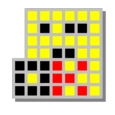Revolutionizing Code Performance Analysis
In the demanding world of software development, understanding code performance is essential for creating efficient, responsive applications. Tracy emerges as a sophisticated solution designed to address the complex challenges developers face when analyzing application behavior. This comprehensive profiling tool represents a significant advancement in performance monitoring technology, offering capabilities that extend far beyond traditional profiling approaches.
Tracy functions as a hybrid profiler, combining multiple analysis methodologies to deliver insights that single-approach tools cannot match. Whether you're developing high-performance games, real-time systems, or complex desktop applications, Tracy provides the analytical depth necessary to identify bottlenecks, optimize resource usage, and ensure your code runs at peak efficiency. The tool's versatility and precision make it an invaluable asset for developers working across diverse programming environments.
Understanding Tracy's Core Functionality
At its foundation, Tracy serves as a real-time performance analysis platform capable of monitoring code execution with remarkable precision. Unlike conventional profilers that introduce significant overhead or require extensive setup procedures, Tracy implements a streamlined architecture that minimizes its impact on system resources while maximizing analytical capabilities. This balance between thoroughness and efficiency distinguishes Tracy from competing solutions.
The real-time aspect of Tracy proves particularly valuable during active development cycles. Developers using Tracy can observe performance metrics as code executes, enabling immediate identification of problematic patterns or unexpected behavior. This immediacy transforms the debugging and optimization workflow, reducing the time between code modification and performance validation. Tracy essentially creates a feedback loop that accelerates the development process while improving final product quality.
Hybrid Profiling: Combining Frame Analysis with Statistical Sampling
What makes Tracy particularly powerful is its hybrid profiling methodology. Traditional profilers typically employ either frame-based analysis or statistical sampling, each approach offering distinct advantages and limitations. Tracy intelligently combines both techniques, allowing developers to leverage the strengths of each method simultaneously. This dual approach provides comprehensive insights that single-method profilers simply cannot deliver.
Frame analysis within Tracy enables precise examination of individual execution frames, perfect for understanding sequential code behavior and identifying specific performance anomalies. Meanwhile, the statistical sampling component of Tracy captures broader patterns across extended execution periods, revealing systemic issues that might not appear in isolated frame analysis. Together, these methodologies within Tracy create a complete performance picture.
The hybrid nature of Tracy proves especially beneficial when analyzing complex applications where performance characteristics vary significantly across different execution contexts. By switching between frame-level detail and statistical overview, developers using Tracy can navigate from macro-level patterns to micro-level specifics seamlessly, ensuring no performance issue escapes detection.
Minimal Performance Impact Through Intelligent Design
One critical challenge with performance profiling tools involves the paradox of measurement impact: the act of monitoring performance can itself degrade performance. Tracy addresses this fundamental problem through careful architectural decisions that minimize profiling overhead. The tool achieves this by recording events in just a few seconds, utilizing efficient data capture mechanisms that avoid burdening CPU resources.
Tracy accomplishes low-impact monitoring by interfacing directly with processor hardware mechanisms rather than relying exclusively on software-based timers. This approach allows Tracy to obtain exact measurements without the imprecision associated with system timers used by many competing profilers. The accuracy improvement is substantial, enabling Tracy users to trust their performance data completely.
The efficiency of Tracy becomes particularly apparent when profiling performance-critical applications such as games or real-time systems where every microsecond matters. Developers can leave Tracy running continuously during development without experiencing the sluggish behavior that often accompanies traditional profiling tools. This capability transforms Tracy from an occasional diagnostic tool into a constant development companion.
Remote Analysis: Client-Server Architecture Advantages
Tracy implements a sophisticated client-server model that dramatically expands its utility, especially in complex development environments. This architecture allows Tracy to separate data collection from data visualization, enabling developers to profile applications running on one system while viewing results on another. The flexibility this provides cannot be overstated, particularly for embedded systems development or remote debugging scenarios.
When using Tracy in client-server mode, developers simply run the Tracy client on their workstation while the profiled application executes elsewhere. The Tracy server component embedded in the target application captures performance data and transmits it to the client for visualization. This separation means that Tracy can profile applications running on devices with limited display capabilities or in headless environments.
The remote capabilities of Tracy also facilitate collaborative debugging and optimization workflows. Multiple team members can connect Tracy clients to the same profiled application simultaneously, enabling real-time collaborative analysis sessions. This feature transforms Tracy into a team tool rather than just an individual developer utility, enhancing communication around performance optimization efforts.
Comprehensive Visualization and Intuitive Interface
Data visualization represents a critical component of effective performance analysis, and Tracy excels in this domain through its carefully designed graphical interface. The Tracy interface presents performance data through detailed timelines that display execution flow with exceptional clarity. Developers can zoom into specific time ranges, examine individual function calls, and understand execution patterns at whatever granularity the investigation requires.
Flame graphs constitute one of Tracy's most powerful visualization features, providing hierarchical representations of function call stacks that make performance hotspots immediately visible. The flame graph implementation in Tracy allows interactive exploration, enabling developers to click through call hierarchies and understand exactly where execution time is spent. This visual approach to performance data makes Tracy accessible even to developers without extensive profiling experience.
Memory usage visualization within Tracy adds another dimension to performance analysis. The tool tracks allocation patterns, memory consumption over time, and identifies potential memory leaks through intuitive graphical representations. By presenting memory and CPU performance data within the same timeline, Tracy helps developers understand the relationships between different performance aspects, leading to more holistic optimization strategies.
Multi-Language Support Beyond C++
While Tracy is written in C++, its utility extends far beyond C++ development projects. The tool provides robust support for additional programming languages including Python and Lua, making Tracy valuable across diverse development ecosystems. This multi-language capability means teams working with mixed-language codebases can use Tracy as a unified profiling solution rather than maintaining separate tools for different components.
Python support in Tracy enables profiling of applications built with one of the world's most popular programming languages. Data science applications, machine learning pipelines, and web services developed in Python can all benefit from Tracy's analytical capabilities. The integration allows Python developers to access Tracy's advanced features without abandoning their preferred development environment.
For game developers using Lua as a scripting language alongside C++ engines, Tracy provides seamless profiling across both layers. This capability proves invaluable for understanding performance interactions between compiled engine code and interpreted scripts. Tracy essentially eliminates the traditional divide between compiled and scripted code analysis, presenting a unified performance view.
Advanced GPU Profiling Capabilities
Modern applications increasingly leverage GPU computation for performance-critical tasks, making GPU profiling essential for comprehensive performance analysis. Tracy addresses this need through extensive GPU profiling support across all major graphics APIs. Whether working with OpenGL, Vulkan, Direct3D 11, Direct3D 12, or Metal, Tracy provides the tools necessary to understand GPU performance characteristics.
GPU zone profiling in Tracy allows developers to mark specific GPU operations and track their execution time with the same precision applied to CPU profiling. This capability proves critical for graphics-intensive applications where GPU bottlenecks often determine overall performance. Tracy presents GPU activity alongside CPU timelines, enabling developers to understand synchronization points and identify scenarios where one processor waits idly for the other.
The cross-API support in Tracy means developers can profile graphics applications regardless of their chosen rendering technology. Teams working on cross-platform graphics engines particularly benefit from Tracy's ability to provide consistent profiling experiences across different graphics APIs, reducing the learning curve when transitioning between platforms.
Open Source Advantages and Community
As an open-source tool, Tracy offers advantages that proprietary profilers cannot match. The availability of Tracy's source code means developers can examine exactly how the profiler operates, understanding any potential impact on their applications. This transparency builds trust and enables customization for specialized use cases that generic profilers might not address.
The open-source nature of Tracy fosters an active community of users who contribute improvements, report issues, and share profiling strategies. This collaborative ecosystem means Tracy continuously evolves to address emerging performance challenges and support new technologies. Developers using Tracy benefit from collective knowledge and rapid problem resolution through community channels.
Furthermore, the free licensing of Tracy removes financial barriers to adoption. Development teams can deploy Tracy across their entire organization without licensing costs, making advanced performance profiling accessible to projects of any size. This democratization of profiling technology contributes to overall software quality improvement across the industry.
Practical Applications Across Development Domains
Tracy finds applications across virtually every domain of software development. Game developers rely on Tracy to maintain consistent frame rates and optimize rendering pipelines. The tool's ability to profile both CPU and GPU simultaneously makes Tracy perfect for understanding the complex performance dynamics of modern games.
Systems programmers use Tracy to ensure real-time responsiveness in embedded systems and operating system components. The low overhead of Tracy means it can profile performance-critical code without distorting the very behavior being measured. This capability makes Tracy suitable for development scenarios where traditional profilers prove too intrusive.
Application developers building desktop software leverage Tracy to identify UI responsiveness issues and optimize startup times. The detailed timeline visualization in Tracy helps pinpoint exactly which operations cause perceived lag, enabling targeted optimization that improves user experience. Even web backend services benefit from Tracy when components are written in supported languages.
Getting Started with Tracy
Adopting Tracy in development workflows requires minimal setup effort. The tool's design emphasizes ease of integration, allowing developers to begin profiling with straightforward instrumentation of their code. Tracy documentation provides clear examples demonstrating integration patterns for various use cases, accelerating the learning process.
Windows developers can download Tracy and begin exploring its capabilities immediately. The tool runs efficiently on modern Windows systems, providing consistent performance across different hardware configurations. The Tracy distribution includes both the profiling library for application integration and the visualization client for analyzing captured data.
Conclusion: Empowering Developers with Tracy
Tracy represents a comprehensive solution to the complex challenge of code performance analysis. Through its hybrid profiling approach, minimal performance impact, remote analysis capabilities, and extensive language and API support, Tracy delivers value that few profiling tools can match. The open-source nature of Tracy ensures accessibility while fostering continuous improvement through community collaboration.
For developers committed to performance excellence, Tracy provides the insights necessary to transform good code into exceptional code. Whether optimizing game rendering, tuning real-time systems, or improving application responsiveness, Tracy offers the analytical depth and usability that modern development demands. Download Tracy for Windows today and experience intuitive, powerful code profiling that elevates your development process to new heights of efficiency and precision.








